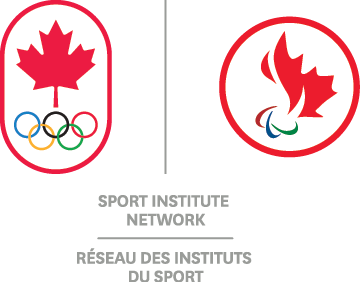Return to Training
All athletes experience times where they stop or slow their training, whether for illness, injury, global pandemic, off-season or a variety of other reasons. It is important to be intentional about your return to training, preparing yourself so that your return is healthy and safe.
Consider the following points…
Training Volume and Intensity
The Collegiate Strength and Conditioning Coaches Association (CSCCa) and National Strength and Conditioning Association (NSCA) came up with return-to-training guidelines. To make sure you follow these recommendations, look at your training level before you stopped/slowed training and compare that to what you have been doing during your downtime.
- What is the change in training hours and intensity?
- How many hours per week were you doing compared to now?
- How would you rate the exertion out of 10 for those session compared to now?
Talk to your coach and see what kind of training volume and intensity they will expect from you in the upcoming weeks/months and work a plan to gradually get to those expectations. The CSCCa and NSCA recommends taking the number of weekly training hours your coach has in mind and work backward 4 weeks:
| Week | Percent reduction from full training volume |
|---|---|
| Week 1 – First week back | 50% |
| Week 2 | 30% |
| Week 3 | 20% |
| Week 4 | 10% |
| Week 5 – Full training | 0% |
Keep in mind that these recommendations apply to those that will be increasing training. Some of you might have been doing a lot more at home without work or school. If this is the case for you, expect that you might have to reduce the hours you can train as you go back to work or school.
Need additional guidance? Reach out to CSCM Physical Preparation or Physiology, or talk to your coach.
Movement Patterns
Many sports have certain movement patterns, or ways you move your body, that are hard to replicate when training at home. We recommend that you examine what kind of movement patterns you have been performing during the closures and compare to your sport.
- Are they similar to those found in your sport?
- Were you performing them at the same strength or explosiveness as your sport?
Keep that in mind as you return to training. Ease into movements that you have not completed in a while, especially ones that require more strength and explosiveness. Your neuromuscular system (brain-muscle connection) needs some time to re-adjust to those movement patterns. Likewise, expect to feel some soreness after re-introducing a movement after an extended period off.
Need additional guidance? Reach out to CSCM Physical Preparation team.
Heat Stress
Does your sport involve outdoor training or competition? Do you train in a warm or poorly ventilated facility?
If that is the case, and you have not been training outdoors throughout the spring, consider gradually exposing yourself to hot or humid temperatures to reduce the risk of exertional heat illness. Starting training in heat mid-June can be challenging, and your body needs time to get acclimated to hot weather.
- Familiarize yourself with symptoms of exertional heat stroke. This is a medical emergency.
- Consider exercising at cooler times of the day (morning and evening) and look at your session length. A multi-hour training session can drag into hotter parts of the day.
- Wear lighter and looser clothing, a hat, sunglasses, and sunscreen during warm training sessions.
- Reduce session training load (volume and/or intensity) if the weather is warmer or more humid than expected.
- Ensure you hydrate well before, during and after training.
- On particularly hot or humid days, have someone else with you that can ensure your safety.
Need additional guidance? Reach out to CSCM Physiology or Dietetics teams.
Nutrition
If your training load has changed drastically, there may have also been some significant shifts in your eating patterns. If you are changing your training load, recognize that your nutritional needs will also change with that.
- Does your dietary intake meet your energy needs?
- Are you taking in the nutrients you need?
- Are you hydrating adequately?
Need additional guidance? Reach out to CSCM Dietetics team.
Mental Health
As you return to sport, you will likely experience some stress. This may be the longest you have been away from your sport. It might be difficult getting used to a new training load again, returning to work or school, and you may have to re-learn skills you used to have mastered. You can use the below strategies to help you manage your mindset as you enter training. There are 4 C’s to hardiness:
Commitment – know why you are doing your sport. Know who you want to be and what that means for how you are going to deal with challenges and setbacks.
Control – focus on what you have control over (i.e., your response, your attitude, your thoughts). When you start to worry, bring your head back to what you can control right now.
Compete – embrace the challenges of this new situation. You are competitive, how cool that you have a new situation to figure out and overcome.
Connect – know who is on your support team. Reach out and get support when you need to.
Have regular check-ins with where you are at emotionally. Athletes often think they are invincible. We are resilient when we are honest and deal with emotions as they come up.
And maybe most importantly, be kind to yourself. Be curious when you struggle and treat yourself the way you would treat a teammate who was struggling.
Need additional guidance? Reach out to CSCM Mental Performance team.
Routine
After any disruption to regular training, life will eventually return to a more ‘normal’ routine. This includes your sport training schedule, but also your work and school schedule. This can be particularly challenging if your work or schooling was also drastically impacted by time away.
Returning to a more rigid schedule means more juggling the different facets of your life and trying to balance their demands on your time. This also takes a bit more preparation and planning of your days if you spend a greater proportion of your time away from home.
Need additional guidance? Reach out to CSCM Mental Performance team.
Sleep
Returning to a more rigid routine means more rigid sleep/wake times. Keeping in mind that returning to training will be more physically and mentally taxing, therefore sleep should be a priority to ensure proper recovery.
Is the time you are going to sleep and waking up compatible with your training, work, or school schedule? If not, consider a gradual shift to your sleep/wake times to ease into your new schedule.
For travelling athletes, we usually recommend shifting sleep/wake times by one hour every day to help with jet lag, starting several days before they leave. This shift can be more gradual (e.g. 30 or 45 minute shift per day) depending on how drastically you need to change your schedule, how many days you have to do so, and your ability to shift your schedule.
Need additional guidance? Reach out to CSCM Physiology or Mental Performance teams.


